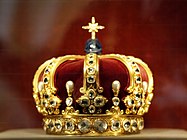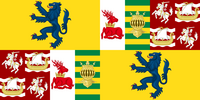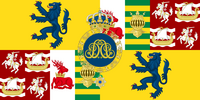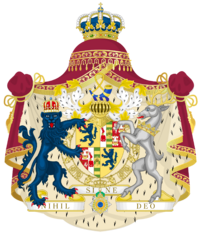Monarchy of Mascylla: Difference between revisions
| Line 239: | Line 239: | ||
The core of the Mascyllary royal family comprises as follows, according to the Lord Chamberlain of the Royal Household (''Herr Kämmerer des Königlichen Haushalts'') Alexander von Pappel in 2021: | The core of the Mascyllary royal family comprises as follows, according to the Lord Chamberlain of the Royal Household (''Herr Kämmerer des Königlichen Haushalts'') Alexander von Pappel in 2021: | ||
*HRH The Duke of Hohenehr Prince Lucas (The Queen’s father and predecessor) | *HRH The Duke of Hohenehr Prince Lucas (The Queen’s father and predecessor) | ||
**[[Dorothea I of Mascylla|HM The Queen Dorothy I]] | **[[Dorothea I of Mascylla|HM The Queen Dorothy I]] | ||
**[[Dorothea I of Mascylla|HM The Prince Consort and Count of Auserburg and Clemens Wolfgang]] (The Queen’s husband) | **[[Dorothea I of Mascylla|HM The Prince Consort and Count of Auserburg and Clemens Wolfgang]] (The Queen’s husband) | ||
| Line 251: | Line 247: | ||
**[[Brigitte, Duchess of Jusland|HRH The Duchess of Jusland Princess Brigitte]] (The Queen’s sister-in-law) | **[[Brigitte, Duchess of Jusland|HRH The Duchess of Jusland Princess Brigitte]] (The Queen’s sister-in-law) | ||
**[[Claudia, Duchess of Morleck|HRH The Dowager Duchess of Morleck Princess Claudia]] (The Queen’s widowed sister-in-law) | **[[Claudia, Duchess of Morleck|HRH The Dowager Duchess of Morleck Princess Claudia]] (The Queen’s widowed sister-in-law) | ||
*HRH The Duke of Elpsland Prince William (The Queen’s paternal uncle) | |||
*HRH The Duchess of Elpsland Louise (The Queen’s paternal aunt-in-law) | |||
*TH Count of Wollersleben-Erpe Edward Gröber (The Queen’s paternal widowed uncle-in-law) | |||
*TMH The Marquise of Mordani-Sizzi Cecilie (The Queen's maternal aunt) | |||
===Extended royal family=== | ===Extended royal family=== | ||
Revision as of 21:51, 21 November 2022
This article is incomplete because it is pending further input from participants, or it is a work-in-progress by one author. Please comment on this article's talk page to share your input, comments and questions. Note: To contribute to this article, you may need to seek help from the author(s) of this page. |
| Queen of the Crowned Republic of Mascylla | |
|---|---|
| Königin der Gekrönten Republik Maskillien | |
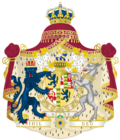 | |
| Incumbent | |
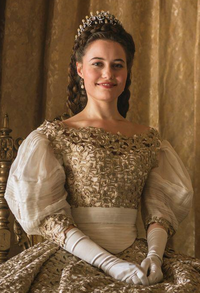 | |
| Dorothy I since 25 November 2005 | |
| Details | |
| Style | Her Majesty |
| Heir apparent | Prince Frederick |
| First monarch | Lucas I |
| Formation | 23 May 1793 |
| Residence | Königsreh Palace, Königsreh (official) Hohenehr Palace, Königsreh (private) Augusthal Palace, Augusthal (secondary) |
| Appointer | Hereditary |
The monarchy of Mascylla, officially the Monarchy of the Crowned Republic of Mascylla (Hesurian: Monarchie der Gekrönten Republik Maskillien) and colloquially known as the Mascyllary monarchy (Hesurian: Maskillische Monarchie), is the monarchical and upmost constitutional institution of the Crowned Republic of Mascylla and its Overseas Territories. The current monarch and second historical queen is Dorothy I of the House of Ahnern-Welsbach since 25 November 2005, upon the death of her father, King Lucas III.
A constitutional monarchy in essence, it has ruled Mascylla since its inception in 1793, but after the Mascyllary Revolution in 1924, it has been transformed into a ceremonial monarchy under a parliamentary system. The Monarch is bestowed the title of King or Queen of Mascylla (Hesurian: König Maskilliens, Königin Maskilliens), among a variety of others. Upon the end of a monarch's reign, either by death or abdication, the successor is formally elected by secret ballot by a specially convened Convention of the Realm (Reichsversammlung); however, this style of elective monarchy has largely been of hereditary nature in practice, as the Crown Princes and Princesses of Ahnern have been elected without interruption since 1847.
The Queen and her close relatives execute a number of official, unofficial, representative, and ceremonial duties and roles in Mascylla and abroad. While the Queen has the rights and powers of a constitutional monarch, she does not usually exercise them by herself due to the precedent of common law by her two predecessors but instead relies on the Reichsrat, Reichssenat, and Kronenrat for policymaking. Therefore, she is a de facto parliamentary monarch as opposed to her role granted by the royal prerogative, which is stipulated in the Constitution. As the country's fount of honor, the monarch bestows honors and ceremonially appoints elected Prime Ministers, is able to secretly engage in discourse pertaining draft laws, and serves as the nominal commander-in-chief of the Mascyllary Reichswehr.
By the 19th century, Mascylla had developed into a united nation-state following the War of the Five Kings and the peace negotiations of the Treaty of Langquaid that followed it. The historical rivalry between the monarchies of Aldia backed by the Elbgau Confederacy and Adwhin concluded with an Aldian victory, absorbing the remaining independent states and proclaiming their king, Lucas I, as Mascylla's monarch and effectively founding the Ahnern royal dynasty. The monarchies of each state within Mascylla were continued, however, now under the supervision of the Aldian state. Throughout the 19th century, the monarchy ruled the Mascyllary Kingdom albeit with increasing authority and civil dissatisfaction. Culminating in the Mascyllary Revolution in 1923, the monarchy was dissolved at first and then radically reshaped, with the liberal Maximilian I as its figurehead. The deterioration of the monarchy's position as a foremost domestic political power enabled the foundation of a parliamentary representative democracy, which continues to rule Mascylla today. While in recent times the monarchy and its family have been politically indecisive, they retain their cultural and symbolic significance as the country's traditional representatives while enjoying large public popularity.
Constitutional and official role
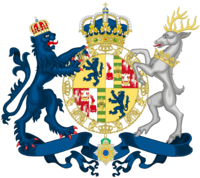 |
|---|
| This article is part of a series on the politics and government of Mascylla |
List
The Mascyllary monarchy is considered the continuation of the Aldian monarchy, but is not listed here.
| Name | Portrait | Birth | Marriages | Death | House |
|---|---|---|---|---|---|
| Lucas I Lucas George 23 May 1793 – 2 August 1827 (34 years) |
 |
16 July 1744 Augusthal Palace Son of Albert I and Anne of Geserheim-Soburg |
Princess Josephine of Welsbach-Sternau Augusthal Palace 13 November 1778 3 children |
2 August 1827 Hohenehr Palace Age: 83 years |
Lünburg |
| Lucas II Lucas August 3 August 1827 – 28 October 1847 (20 years) |
 |
11 December 1780 Saarow House Son of Lucas I and Josephine of Welsbach-Sternau |
Sophia Martha of Marlburg-Gränich-Freida Hohenehr Palace 20 April 1800 5 children |
28 October 1850 Weidenau Palace Age: 69 years |
Ahnern |
| Sophia I Sophia Alexandra 2 November 1847 – 23 March 1882 (35 years) |
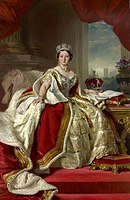 |
15 July 1810 Schönbrunn Palace Daughter of Frederick Otto of Welsbach and Catherine of Ahnern-Mürbach-Konreid |
Albert of Lübbernau-Welbermark Marienfelde Residence 30 June 1829 4 children |
23 March 1886 Königsreh Palace Age: 76 years |
Ahnern-Welsbach |
| Frederick I Frederick William 24 March 1882 – 5 September 1892 (10 years) |
 |
13 February 1831 Hohenehr Palace Son of Sophia I and Albert of Lübbernau-Welbermark |
Charlotte of Maining-Saanberg-Geisahl Augusthal Palace 8 May 1852 8 children |
5 September 1892 Heiligtann Palace Age: 61 years |
Ahnern-Welsbach |
| Louis I Louis Edward Frederick 6 September 1892 – 29 May 1923 (31 years) |
 |
31 January 1850 Böhrder Residence Son of Frederick I and Charlotte of Maining-Saanberg-Geisahl |
Princess Alexandra of Tudonia Hohenehr Palace 12 April 1893 3 children |
29 May 1923 Königsreh Age: 73 years |
Ahnern-Welsbach |
| Mascyllary Revolution and establishment of the Crowned Republic in January 1924 | |||||
| Maximilian I Maximilian Charles George Albert 5 March 1924 – 14 June 1976 (52 years) |
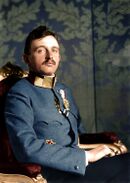 |
12 November 1914 Hohenehr Palace Son of Louis I and Alexandra of Shwesia |
Princess Sophia of Lavaria St. Lorenz Cathedral 22 March 1935 4 children |
28 June 2001 Schönbrunn Palace Age: 86 years |
Ahnern-Welsbach |
| Lucas III Lucas Albert Theodore William 15 June 1976 – 24 November 2005 (29 years) |
 |
4 February 1938 Weidenau Palace Son of Maximilian I and Sophia of Lavaria |
Henriette of Taubach-Goldach and Birchau St. Lorenz Cathedral 11 September 1969 4 children |
Alive Age as of 2020: 82 years |
Ahnern-Welsbach |
| Dorothy I Dorothy Sophia Theresa 25 November 2005 – present (17 years as of 2022) |
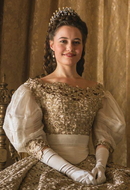 |
10 October 1987 Hohenehr Palace Daughter of Lucas III and Henriette of Taubach-Goldach and Birchau |
Wolfgang of Auserburg and Clemens Königsreh Palace 26 May 2005 3 children |
Alive Age as of 2022: 35 years |
Ahnern-Welsbach |
Family tree
Timeline

Cultural and symbolic significance
Symbols and arms
Titles and styles
| Styles of Queen Dorothy I of Mascylla | |
|---|---|
 | |
| Reference style | Her Majesty (Ihre Majestät) |
| Spoken style | Your Majesty (Eure Majestät) |
| Alternative style | Lady/Dame (Dame; in third person) Ma'am (Madame; in first person) |
The most commonly used titles and style of the monarch at present is as follows: "Dorothy the first, Queen of the Crowned Republic of Mascylla and of Her Other Territories in Overseas" ("Dorothea die erste, Königin der Gekrönten Republik Maskillien und Ihrer Anderen Territorien in Übersee").
However, in occasions of state visit reception or acts of national significance, as is the case in the appointment of a Prime Minister or the opening ceremony of the Parliament, the mid-sized style and title is used: "The Queen Dorothy the first of the Crowned Republic of Mascylla and Her Other Territories in Overseas, of Aldia Queen, of Fahnicht, Welsbach, and Birchau Grand Duchess, of Elpsland Sovereign and Supreme Duchess, of Jusland, Morleck, Nelgery, and Holnia Duchess, of Seebronn and Würthburg Burgravess, of Eustria Landgravess, of Falia, Lehpold, Lensrau, Geisahl, and Weibteich Princess, of Ahnern Countess" (Die Königin Dorothea die erste der Gekrönten Republik Maskillien, von Alden Königin, zu Fahnicht, Welsbach und Birchau Großherzogin, zu Elpsland souveräne und oberste Herzogin, zu Jusland, Morleck, Nelgern und Hohlnern Herzogin,zu Seebronn und Würthburg Burggräfin, zu Eystrun Landgräfin, zu Falien, Lehpold, Lensrau, Geisahl und Weibteich Fürstin, zu Ahnern Gräfin").
The correct etiquette to address the monarch in conversation is "Your Majesty" (Eure Majestät) and subsequently as "Ma'am" (Madame) or "Sir" (Herr). Individuals of lesser titles are addressed as follows: "His" or "Her Royal Highness" (Seine or Ihre Königliche Hoheit) for the titles of prince and duke, "The Most Honorable" (Der or Die Höchst Ehrenwerte) for the title of marquess, and "The Honorable" (Der or Die Ehrenwerte) for the titles of count and viscount. Additional styles include "By the Grace of God" (Von Gottes Gnaden) and "Margravess of Warthburg" (Markgräfin zu Warthburg), though these may be added or omitted upon the monarch's request. Moreover, ordinals are used for Mascyllary monarchs regardless of how peculiar or ordinary their name is, and the monarch is asked to choose a regnal name upon accession.
The most important and senior members of the Mascyllary royal family hold the princely title of Prince or Princess of Mascylla (Prinz or Prinzessin von Maskillien), whereas the wider family, in addition to other titles, hold the title of Prince or Princess of Ahnern (Prinz or Prinzessin von Ahnern). Subsidiary titles held by the Monarch and close relatives to them are of historical note, signifying and representing the accumulation and accretion of lands by the House of Ahnern and the Kingdom of Aldia at large.
Orders
The monarch presides over a number of royal orders of chivalry and merit in the Mascyllary honors system and is responsible for recognizing and appointing candidates to the national orders on their sole discretion and behalf. The orders maintain highly symbolic significance in Mascyllary society and politics, and serving politicians and military officials are often awarded membership amid or after their retirement. Male and female members are styled as knights (Ritter) or dames (Damen) of multiple classes of authority respectively.
The most senior and exalted order of knighthood is the Order of the Blue Lion (Orden des Blauen Löwen), outranked in the order of precedence only by the Black Cross (Schwarzes Kreuz), followed by the Order of the Crown (Orden der Krone). Appointments and awards to these orders are almost always in recognition of demonstrating exceptional merit or valor, or particularly noteworthy service to the monarch and the nation, regardless of whether the individual is a civilian or a military officer.
Regalia
The Mascyllary Crown Jewels (Maskillische Kronjuwelen) is the royal regalia and ensemble of ceremonial objects accessible to the Mascyllary monarch and held in trust, which are stored and on public display in Köpenick Palace (Schloss Köpenick). It consists of 74 items, including but not limited to: a complete set of coronation regalia with 2 sovereign crowns (St Theodore's Crown and Crown of Lucas I), 3 consort crowns, 5 princely coronets, 1 royal sceptre (Divine Sceptre), 5 swords (among them the Sword of the Crown), and 1 orb, 8 maces, 5 trumpets, 2 robes, 3 rings, and 1 pair of spurs.
Used for coronations of monarchs from the House of Ahnern, the crown jewels are an integral component to denote their role as head of state. During such ceremony, holy oil is used for anointment, the individual in question is invested with symbolic ornaments and robes, and subsequently crowned with St Theodore's Crown; after the 1793 formation of the Mascyllary Kingdom, the Kings of Aldia continued to use their regalia despite a new crown for Mascylla having been created and used once with Lucas I's coronation in 1793. The crown (Mascyllary State Crown, Maskillische Staatskrone) intended as their successor in 1924 was never created. However, a heraldic version of this crown exists. Queen consorts are invested with specially made crowns and regalia of plainer design.
Arms and standard
The monarch possesses the coat of arms of Mascylla as its sovereign, and is described as follows: "A Shield Or, halfed by a slim line with outbent Arms, and an Inescutcheon containing the Dynastic Arms of the Royal Houses. In the first Field three open Antlers Azure, placed over each other. In the second Field three Lions Azure, crowned with open Crowns Or. The Inescutcheon is party per pale the Arms for the House of Welsbach (Bendwise three Antlers Azure); and the House of Ahnern (Azure, three Lions watching over a Fortified Bridge Or and Argent)."
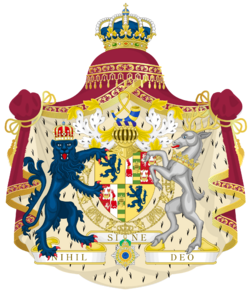
The royal standard, a personal flag of the differenced version of the coat of arms in banner form defaced with the monarch's royal cypher, is also used in their capacity as sovereign. Similarly to other special flags in use, it is flown only from buildings and vehicles when the monarch is present. The royal standard without a monarch's royal cypher is flown until a successor is elected.
When the monarch is not present at one of their residences, the ordinary Three Bands Flag of Mascylla is flown instead.
Residences
The Mascyllary royal family inhabits and occupies a variety of residences throughout Mascylla. The official residence and administrative headquarters of the monarchy is Lobrecht Palace (Lobrecht-Palast), commonly but incorrectly referred to as Königsreh Palace (Königsreher Schloss), in the borough of Lorenz-Prinzwald. It hosts the vast majority of official functions such as state banquets, public audiences, receptions, royal christenings, and lyings-in-state. Historically, the City Palace (Stadtpalast) was intended and constructed for the purpose of being the Mascyllary monarch's residence in Königsreh, but a devastating fire in 1818 forced Lucas I and his family to acquire Lobrecht Palace, privately built by Count William Gunther of Lobrecht nine years earlier.
The New Palace (Neues Schloss), referred to as Augusthal Palace (Augusthaler Schloss), is considered the second official residence of the monarch in the state of Aldia since its construction in 1904, and is principally used during weekends and multiple holidays of note; it is the largest single-building inhabited royal residence in the world and hosts the assemblies of the Imperial Convention and the Accession Council. The third quasi-official residence is Hohenehr Palace (Schloss Hohenehr), located near Königsreh at Wittingen, which is frequently used as a summer retreat by the royal family. Two royal residences are privately inherited properties of the monarch and thus not owned by their institution, on the virtue of the position as King or Queen: the estate manor of Sybillenhof Palace (Schloss Sybillenhof) and Castle Lauenberg (Burg Lauenberg).
A number of residences are no longer used by members of the royal family in some capacity and thus transformed into museums, repurposed, or inherited by individuals not regarded as part of the royal household. Köpenick Palace (Schloss Köpenick), Lucas Palace (Lukaspalais), and Belleau Palace (Schloss Belleau) are museums, Liechtenwald Palace (Schloss Liechtenwald) contains the law faculty of the University of Lehpold, and Schöneiche Palace (Schloss Schöneiche) hosts the headquarters of the Telmerian Union Budgetary Control Committee.
The Agency for Royal Palaces and Property is directly responsible for the management and upkeep of unoccupied residences and those owned by the monarchy, while the Agency of Royal Households cares for and maintains the residences occupied by members of the royal family and those in private ownership. The royal yacht Maskane, which is traditionally used by members on official visits overseas or for summer cruises, is within the responsibility of the Mascyllary Navy.
Royal family
| Royal family of the Crowned Republic of Mascylla |
|---|
 |
|
The Mascyllary royal family is the ambiguously defined group of close relatives surrounding the Queen Dorothy I. The princely title of Prince or Princess of Mascylla (Prinz or Prinzessin von Maskillien) is used by the most senior and significant members of the royal family, whereas the wider family, in addition to other titles, hold the title of Prince or Princess of Ahnern (Prinz or Prinzessin von Ahnern). However, no instrument or document strictly defines who is or is not a member.
Current principal royal family
The core of the Mascyllary royal family comprises as follows, according to the Lord Chamberlain of the Royal Household (Herr Kämmerer des Königlichen Haushalts) Alexander von Pappel in 2021:
- HRH The Duke of Hohenehr Prince Lucas (The Queen’s father and predecessor)
- HM The Queen Dorothy I
- HM The Prince Consort and Count of Auserburg and Clemens Wolfgang (The Queen’s husband)
- HRH The Crown Prince of Ahnern Frederick (The Queen’s eldest child and heir apparent)
- HRH The Duchess of Fahnicht Princess Julia (The Queen’s elder daughter)
- HRH The Duchess of Birchau Princess Victoria-Theresa (The Queen’s younger daughter)
- HRH The Duke of Jusland Prince Henry (The Queen’s brother)
- HRH The Duchess of Jusland Princess Brigitte (The Queen’s sister-in-law)
- HRH The Dowager Duchess of Morleck Princess Claudia (The Queen’s widowed sister-in-law)
- HRH The Duke of Elpsland Prince William (The Queen’s paternal uncle)
- HRH The Duchess of Elpsland Louise (The Queen’s paternal aunt-in-law)
- TH Count of Wollersleben-Erpe Edward Gröber (The Queen’s paternal widowed uncle-in-law)
- TMH The Marquise of Mordani-Sizzi Cecilie (The Queen's maternal aunt)
Extended royal family
- HRH Princess Emilia of Jusland (The Queen's niece and Prince Henry's daughter)
- HRH Prince Lucas of Jusland (The Queen's nephew and Prince Henry's son)
- HRH The Hereditary Duke of Morleck Prince Maximilian (The Queen’s nephew and Prince Louis' son)
- HRH The Count of Taubach-Goldach Prince George (The Queen’s nephew and Prince Charles' son)
- TH Viscount of Liebenwalde Albert Ahnern (The Queen's cousin and Prince William's son)
- Renate Groß (Albert Ahnern's divorced first wife)
- Cornelia Weiszler (Albert Ahnern's second wife)
- Francis Louis Ahnern (Albert Ahnern's eldest son)
- Marcus Ahnern (Albert Ahnern's second son)
- Philip Ahnern (Albert Ahnern's youngest son)
- TH Lady Margaret Welkerskamp (The Queen's cousin and Prince William's daughter)
- Dietrich Welkerskamp (Lady Margaret's husband)
- Beatrice Welkerskamp (Lady Margaret's daughter)
- Thomas Alexander Gröber (The Queen's cousin and Princess Anne's son)
- Franziska Gröber (Thomas Alexander Gröber's wife)
- TH Count of Godenborn George Ahnern (The Queen's cousin and Prince Albert Frederick's son)
- TH Countess Eloise of Ahnern and Peake-Wombeley (George Ahnern's wife)
- TH Viscount of Mildenburg Michael Ahnern-Peake-Wombeley (George Ahnern's son)
- TH Lady Ines Ahnern-Peake-Wombeley (George Ahnern's daughter)
- TMH Marquess of Mordano-Sizzi Bruno (The Queen's maternal uncle-in-law)


